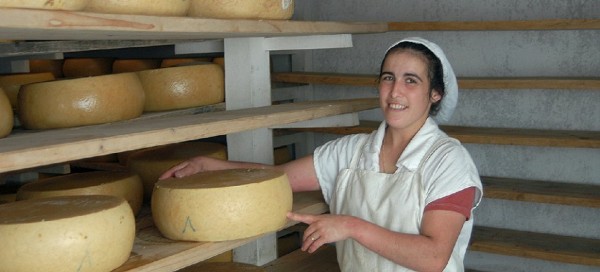
Few visitors who plan a holiday in the Azores do so because of the islands’ culinary reputation, but the islands are well known around Portugal for the quality of their cheese. While cheeses in mainland Portugal are typically made with milk from sheep and goats, Azorean cheese is mainly produced from cow’s milk.
The history of cheese production in the Azores can be traced back to the time when the islands served as a vital stopping off point for ships sailing west to the Americas and south towards the Cape of Good Hope and on to India and the Far East. It was Flemish settlers, invited to the islands by Henry the Navigator in the 15th century, who first introduced cattle and began the islands’ first cheese making efforts. The procession of passing ships needed food which would last many days at sea, and being the excellent merchants that they were, the Azoreans produced good, hard cheeses which would stay tasty for several weeks.
Even now, cheese in the Azores is largely an artisan business, and production is concentrated in the winter months (some say that it’s important to make the cheese with cold hands). Each island has its own style of cheese: Pico makes a dense, soft cheese with a smoky flavour; Graciosa cheese is known for its spiciness; the hard Flamengo variety is made on Faial.
Perhaps the best-known of the Azorean cheeses is Queijo da Ilha (Island Cheese) from the island of São Jorge. It comes in many forms, from a young delicate flavoured variety which works well as a topping on baked potatoes and pasta dishes, to a mature, extra strong cheese which has a reassuring smelliness and a punchy taste not unlike a good, strong cheddar. Some attribute the cheese’s distinctive sharp flavour to the fact that the cows graze on the island’s fertile volcanic slopes. Ilha cheese is often served as a dessert along with fruit, and is well matched with a full-bodied glass of port or Madeira wine.
When buying cheese, look out for the designation of Denominação de Origem Protegida (DOP) or Protected Designation of Origin. This stamp confirms that the cheese has been produced within the designated region using traditional methods and ingredients. The main cheese dairies on the islands will usually welcome visitors with prior warning, and hotels can often make the necessary call. And for those who take a tour and are tempted to buy a full Queijo da Ilha on your visit to the Azores, bear in mind that it can weigh up to 10kg, so make sure there’s plenty of spare space in the suitcase!




